This article was medically reviewed by Dale K. Mueller, MD. Dr. Mueller is a Cardiothoracic Surgeon with the Cardiothoracic & Vascular Surgical Associates group in Jacksonville, Florida. Dr. Mueller has over 25 years of experience as a surgeon and he completed his fellowship at Rush-Presbyterian-St. Luke's Medical Center in 1999. Dr. Mueller is a member of the Society of Thoracic Surgeons, Cook County Alumni Association, and Rush Surgical Society. He is board certified by the American Board of Surgeons.
There are 8 references cited in this article, which can be found at the bottom of the page.
wikiHow marks an article as reader-approved once it receives enough positive feedback. In this case, several readers have written to tell us that this article was helpful to them, earning it our reader-approved status.
This article has been viewed 118,185 times.
If your doctor diagnoses you with irregular cardiac symptoms, they may prescribe a Holter monitor for you to wear. This fairly common device helps monitor the electrical activity in your heart. It will give your doctor a good understanding about how your heart acts on a daily basis. If you are prescribed a Holter monitor, you will probably have to wear it for two to 14 days, depending on your doctor’s wishes.
Steps
Getting the Monitor Prescribed
-
1Decide if you need to see the cardiologist. If you believe you are having heart problems, you should schedule an appointment with a cardiologist. Your cardiologist will be able to counsel you on what the next steps should be and what tests they want you to undergo.[1]
- If you don’t have a cardiologist, schedule an appointment with your primary care provider and they will give you a referral to a cardiologist if you need one.
-
2Schedule an appointment with the cardiologist. You’ll need an appointment with a cardiologist or a hospital to get the monitor. Typically, a monitor is worn for 24 to 48 hours, but this timeframe can increase up to several weeks at your doctor’s discretion. Your doctor will prescribe the required time for you.[2]
- Your doctor will generally want to do an Electrocardiogram (EKG) and an Echocardiogram before resorting the Holter monitor. The EKG and the Echo will give your cardiologist a reading of your heart’s activity in that moment. But your doctor may want a prolonged, more detailed reading.
- Some common reasons people end up wearing a Holter monitor include suspecting they have an irregular arrhythmia or checking to see if various medication is working effectively.
Advertisement -
3Pick up the monitor. When you go to pick up your monitor for the first time, the tech may put it on for you. If they do, they will affix sticky patches to your skin that help get a more clear reading. If the tech only gives you the monitor, you will have to attach it yourself.
Attaching the Monitor
-
1Clean your skin. The first step in attaching your Holter monitor is to clean your skin very well with soap and alcohol where the adhesive pads will attach to your body. Note that some of them have a gel to affix, and some of them have self-stick pads.[3]
- If your monitor comes with cleansing wipes, use those to clean the area every time you put new sticky pads on.
-
2Attach the sensors to your skin. Put the adhesive pads on your body as directed — this usually means three pads on your chest and one near the bottom of your rib cage on the lower, left-hand side. Secure the electrical leads to the pads according to the instructions.[4]
- Typically, the leads will snap into place on the adhesive pads, but you may have to use a sticky surgical tape instead.
-
3Activating the device. There are various types and brands of Holter monitors, so instructions for activating the device may vary; however, for most Holter monitors, you won’t need to do anything except make sure the battery is charged to maintain functionality.[5]
- If the battery is charged, the machine automatically turns on.
- Make sure you see the activity lights flashing on the monitor itself so you know that it is working properly.
-
4Conduct your normal activities. It is important to live your life normally while wearing the monitor so that your cardiologist can get a genuine representation of your heart activity in your normal life; however, you will not be permitted to get the monitor wet, which means you will have to remove it when you shower. Be sure to reattach the monitor as soon as you are done showering and have dried your body off.[6]
- It is important to avoid all activities that would get the monitor wet while you’re wearing it. Don’t shower with the monitor, avoid sweaty exercises, don’t go swimming, etc.
-
5Keep the battery charged. You will need to make sure the battery for the monitor remains charged. Your cardiologist will probably give you an extra battery so that you can always have a fully charged one that you swap out as needed. This way, you can always have one battery charging while the other is being used.
- Typically, you will be given a battery charging port that the battery simply slips into to charge.
- You will receive explicit instructions about charging the batteries from the technician at the cardiologist’s office before you leave.
-
6Keep a diary. It is important to keep track of your cardiac symptoms while you are wearing the Holter monitor. Keep a journal or diary and write down notes about every abnormal cardiac event that you feel while wearing the monitor. This will give your doctor a more complete picture of what is going on with your cardiac health.[7]
- Some monitors come with a separate phone-like device that allows you to “track” your symptoms. This means that you notify the monitoring company when you feel a symptom so that they know to pay special attention to what is happening on the monitor at that time.
Returning the Monitor
-
1Remove the monitor from your body. When the data measurement period is over, remove the pads and put the device back into its box/packaging. Your doctor may have a solvent to help making removal of the patches easier as they can often leave sticky marks on the skin for days after removal.[8]
-
2Return the equipment. The monitor is basically a rental from the doctor’s office; it is not yours to keep. You must return it to the cardiologist within a specified period of time. If you don’t return it, they will charge you for the equipment.[9]
- You may have to physically go to the cardiologist’s office to return the monitor, or you may be able to simply mail it back to their office. It all depends on the cardiologist’s preference, but they will make it clear to you how they want you to return the device before you leave with it.
-
3Schedule a follow-up appointment with your cardiologist. Your cardiologist will read the results from your Holter monitor and discuss it with you at this appointment. They will let you know if there are any problems and what possible courses of treatment might be.[10]
- The doctor will read the data from the machine and interpret it; they will then decide where to take your treatment from here.
- Your cardiologist may take care of all this with a phone call instead of a follow-up appointment.
Warnings
- Some people find the monitor obtrusive while trying to sleep. Just manage the best you can.⧼thumbs_response⧽
Things You'll Need
- Referral from your doctor
- Holter monitor
References
- ↑ http://www.mayoclinic.org/tests-procedures/holter-monitor/basics/definition/prc-20015037
- ↑ http://www.heart.org/HEARTORG/Conditions/HeartAttack/SymptomsDiagnosisofHeartAttack/Holter-Monitor_UCM_446437_Article.jsp#.V6LNcbgrLIU
- ↑ https://www.nhlbi.nih.gov/health/health-topics/topics/holt/while
- ↑ http://www.hopkinsmedicine.org/healthlibrary/test_procedures/cardiovascular/holter_monitor_92,p07976/
- ↑ https://www.drugs.com/cg/holter-monitoring-aftercare-instructions.html
- ↑ https://medlineplus.gov/ency/article/003877.htm
- ↑ https://www.nhlbi.nih.gov/health/health-topics/topics/holt/while
- ↑ http://www.heartsite.com/html/holter.html
- ↑ http://www.mayoclinic.org/tests-procedures/holter-monitor/basics/what-you-can-expect/prc-20015037
About This Article
Before you put on a holter monitor, make sure to wash your skin well with soap and water so the adhesive pads will stick to your body. Once you dry off, put the adhesive pads on your chest and the bottom of your rib cage as directed by your doctor. Then, check the device to ensure the battery is charged and the activity lights are flashing. After you put the monitor on, continue doing your normal, daily activities so your doctor can get an accurate picture of what your heart activity is like. However, you should avoid getting the monitor wet, so take it off before showering or doing any sweaty exercise. To learn how to keep a diary of cardiac symptoms to help your doctor get a more complete picture of your heart activity, read more from our Surgeon co-author.





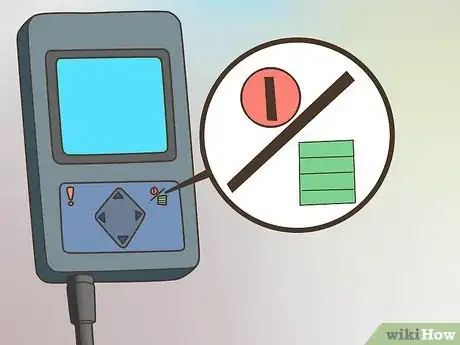

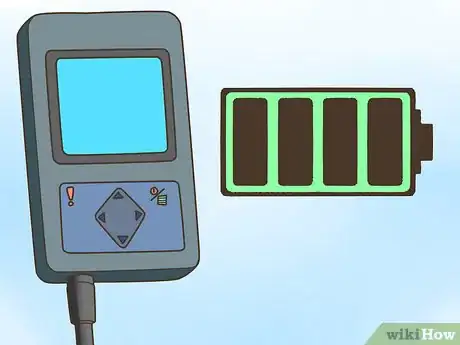

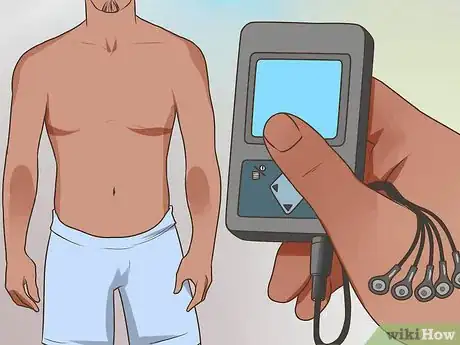
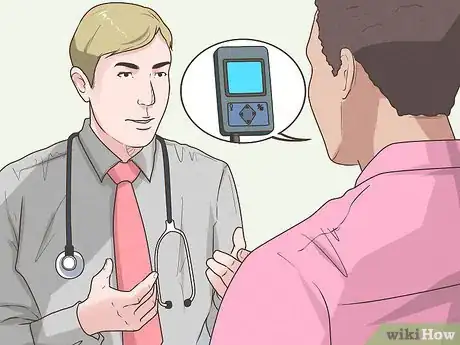





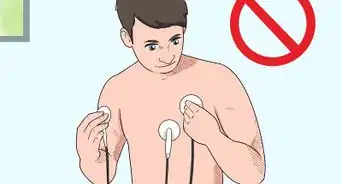
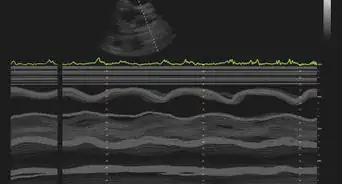


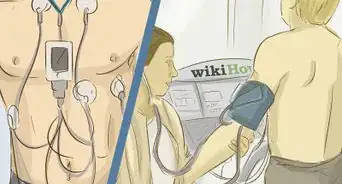

















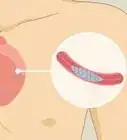




































Medical Disclaimer
The content of this article is not intended to be a substitute for professional medical advice, examination, diagnosis, or treatment. You should always contact your doctor or other qualified healthcare professional before starting, changing, or stopping any kind of health treatment.
Read More...